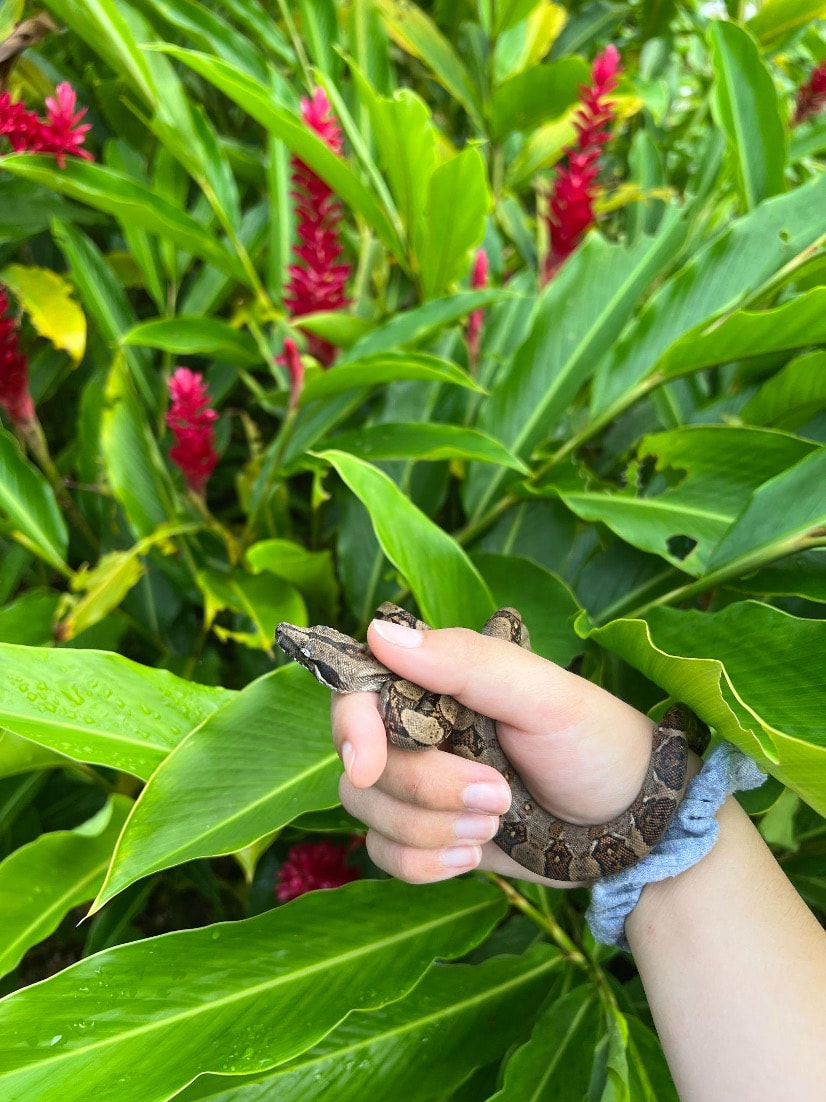|
Creature Feature by Samir Gulati
Taxonomía- La iguana de casco (Corytophanes cristatus) son un lagarto iguánido del género Corytophanes (basiliscos con casco) y de la familia Corytophanidae (lagartos con cabeza de casco). Historia natural- Iguana de casco se encuentra en las selvas tropicales desde el sur de México, pasando por Centroamérica, hasta el noroeste de Colombia. Esta especie arbórea es un depredador único con una dieta especializada en grandes artrópodos que miden hasta la mitad de su tamaño. Aunque pasan la mayor parte de su tiempo posados inmóviles en ramas y lianas, estos lagartos cazan utilizando ráfagas infrecuentes de saltos bípedos una vez que la presa es avistada durante la paciente espera. Dato curioso- Se ha demostrado que la propensión de la turipache cabeza lisa a la inmovilidad persistente permite el crecimiento epizoótico de algas, hongos y hepáticas en su cabeza y cuerpo, lo que puede facilitar la capacidad de camuflaje críptico de la especie. Taxonomy- The helmeted iguana (Corytophanes cristatus) is an iguanid lizard within the genus Corytophanes (helmeted basilisks) and the family Corytophanidae (casquehead lizards). Natural History- Helmeted iguanas can found in rainforests from southern Mexico through Central America down to north-western Columbia. This arboreal species is a unique predator with a specialized diet of large arthropods measuring up to half their size. Though they spend most of their time perched motionless on twigs and vines, these lizards hunt using infrequent bursts of bipedal run-hopping once prey are spotted during patient waiting. Fun Fact- The smooth helmeted iguana's proclivity for persistent immobility has been shown to enable epizoic growth of algae, fungi, and liverworts on its head and body, which may facilitate the species' capability for cryptic camouflage. Creature Feature by Daniel Romero
Rana verde de ojos rojos o Rana de ojos rojos (Agalychnis callidryas) Taxonomía: Esta rana pertenece a la familia Hylidae. Historia Natural: Esta rana es una especie nocturna, arboricola y se refugia en la parte inferior de hojas anchas durante el día y durante la estación seca, con las extremidades dobladas debajo de su cuerpo. Se encuentran en las tierras bajas tropicales del sur de México, en América Central y en la región norte de Sudamérica. Hecho divertido: Cuando es molestado abre sus saltones ojos rojos y muestra sus grandes patas naranjas y sus costados, que son de un brillante azul y amarillo, lo que sorprende a su depredador y le da tiempo a escapar. Red-eyed Leaf-frog (Agalychnis callidryas) Taxonomy: This frog belongs to the Hylidae family. Natural History: This frog is a nocturnal, arboreal species and takes refuge in the underside of broad leaves during the day and during the dry season, with its limbs folded under its body. They are found in the tropical lowlands of southern Mexico, in Central America, and in the northern region of South America. Fun fact: When disturbed, it opens its bulging red eyes and shows off its large orange legs and sides, which are bright blue and yellow, surprising its predator and giving it time to escape. Creature Feature by Annie Gonzalez
Species name (common and scientific): Red-tailed boa or Boa constrictor (Boa constrictor) Taxonomy- Family Boidae Natural History- Boa constrictors are nonvenomous snakes that can be found in a variety of habitats ranging from open savannas to wet tropical forests like the ones found in Panama. Baby boa constrictors start off very small like the one pictured above, however adults can be over 100lbs and about 10-13ft in length. Fun Fact- It was previously believed that Boa constrictors would suffocate their prey by squeezing their lungs until they died to consume them more easily. However, this snake actually subdues its prey by wrapping its body around them and squeezing them until the prey goes into cardiac arrest and the animal dies. They are also able to detect the heartbeat of their prey which allows them to relax and end constriction once the prey is dead and ready to be consumed. Creature Feature by Maria Alcivar
Adorned Graceful Brown Snake (Rhadinea decorata) Taxonomy: This snake belongs to the family Colubridae . Natural History: This species is a diurnal snake that has a wide range in distribution. It ranges from Central Mexico to western Ecuador including Panama. Fun fact: This snake is immune to the O. pumilio frog's skin toxins to which it consumes. Hojarrasquera de Vientre Rojo (Rhadinaea decorata) Taxonomía: Esta serpiente pertenece a la familia de los Colúbridos. Historia Natural: Esta serpiente es diurna y tiene una distribución extensiva que incluye la parte central de México hasta la parte occidental del Ecuador incluyendo Panamá. Hecho divertido: Es inmune al veneno de la rana O. pumilio presente en la piel de ésta, la cual consume. |




 RSS Feed
RSS Feed